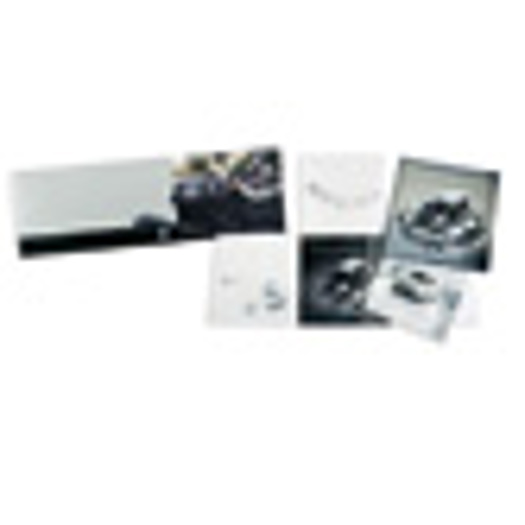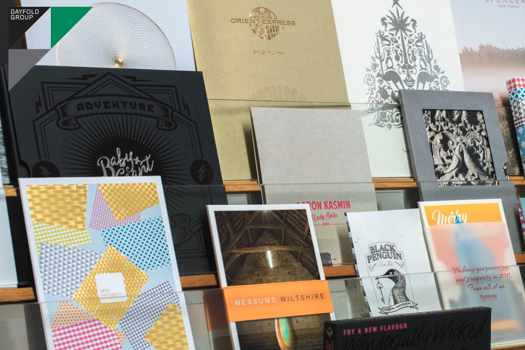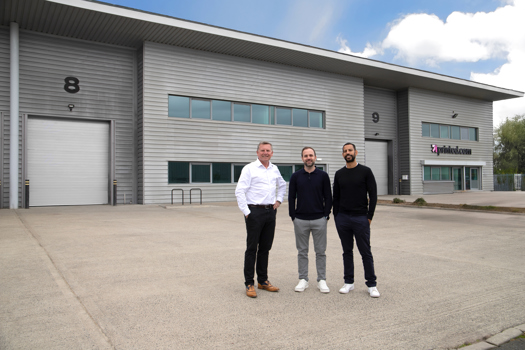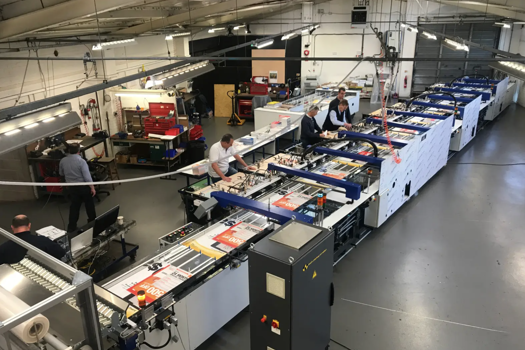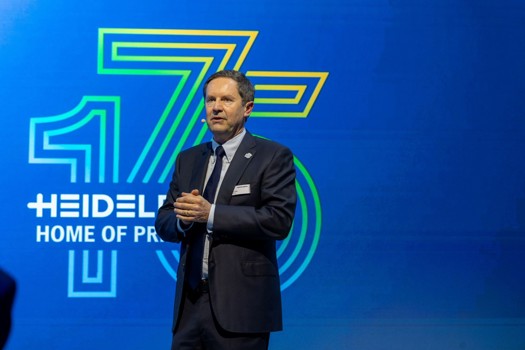While email, digital screens and TV have a role to play in the media mix and are complementing more traditional campaigns, print advertising is still alive and well. So says a recent Mail Media Centre report, which found that in 2010 an average of 91% of direct mail was opened, that 48% of customers felt information received by direct mail was easy to understand compared with 20% by email, and that the percentage of mail where customers took action increased from just 4% in 2004 to 5% in 2010.
Outdoor advertising is delivering similarly impressive results, with a Kinetic Worldwide survey finding that 75% of store owners say posters outside their shops are the main influence on what sells, and Outdoor Media Centre reporting that, although outdoor digital accounts for 14% of their revenue, six out of seven pounds are still being spent on printed posters.
Still need convincing? Then take a look at PrintWeek’s pick of some of the most successful printed campaigns of late...
Clear Channel's H&M OOH campaign
The campaign
Out-of-home (OOH) marketing has long been a key aspect of H&M’s promotional strategy. Working with Clear Channel to deliver wide-format posters, H&M’s outdoor presence is increasing year-on-year with OOH now by far the principal medium for any campaign, accounting for 62% of the brand’s entire media investment (up from 16% in 2006).
The reason behind this emphasis is that H&M has discovered that it is not just a certain sector of the population buying its clothes. Many women now buy H&M clothes and accessorise with more expensive items, so a form of marketing that broadcasts to the public as a whole, and not just young girls, has proved a worthwhile strategy.
Why print?
Print will be the medium of choice for the majority of OOH campaigns for a long time, says Darren Mckay, Clear Channel international sales director, UK, because technological developments in HD presses mean that the quality is always improving. This is particularly advantageous where fashion OOH is concerned, Mckay reveals, with high definition print complementing H&M’s simple and striking images.
"I think there’s something quite sexy about the poster and I think that’s why fashion has bought into it over many years," he says. "There are more large digital canvases coming out, but the quality of them isn’t as good as you get on the smaller format. There’s a also a cost issue with digital screens."
Print is important throughout H&M’s marketing strategy, he adds. The brand appears in the right magazines, attracting people in the first place, and the posters act as reminders to people as they are out and about shopping.
The result
Through consistent growth in outdoor advertising, H&M now runs a live campaign for 22 weeks of every year (versus six in 2006). The result of H&M having visibility on almost every high street in the UK is a brand awareness of 98%, a 700% shift in 16-30s agreeing that H&M would be their first choice, and a 15% increase in global sales in 2010.
GI Solutions' Sky direct mail campaign
The campaign In February 2011, Sky launched a campaign to advertise the value of its packages and promote a broader entertainment lineup. Alongside a heavyweight television campaign promoting Sky Atlantic, the company wanted a similar direct mail solution to a previous pop-up book campaign. GI Solutions had to tailor this format to suit the low costs and quick production times demanded by a large acquisition campaign. The final product featured an image from the opening of HBO’s Boardwalk Empire, with text popping out in front of the body of the flyer.
Why print? Business development director at GI Solutions Alistair Ezzy says that direct mail is still a great way of grabbing people’s attention. "Interactivity is important," he says. "Because the Sky piece was tactile, it was the sort of thing someone might play with or keep on their desk to go back to, rather than just throw away."
A print item is less likely to be overlooked than an email, Ezzy adds, and is much easier to get to a person about whom little is known. "Direct mail hangs around," he says, "but the problem with digital is that it’s very easy to move emails out of your inbox and into deleted items. You move them quickly because so many come in. Also, it’s much easier for a company to get an email address wrong than it is the home address."
The result Sky was thrilled with the execution of the campaign, says Ezzy, and the way that interest in Sky packages was generated by the integrated campaign of which the door-drop was a part. Although it was hard to track the exact impact of the printed element, the door-drop played a crucial part in peaking people’s interest and inspiring them to seek further information online.
Hollywood Monster's Morgan Sindall rebrand
The campaign The providers of all corporate site signage and graphics for Morgan Sindall across the UK, Hollywood Monster has supported the construction firm through two rebrands, from Bluestone to Morgan Ashurst, to the current Morgan Sindall. Products crucial to the latest rebrand were signage and graphics, health and safety signage, window graphics, elevation signage, 3D letter signage and plant stickers. Over 300 addresses required rebranding over a three-day period, which saw more than 1,000 parcels sent out around the UK. All of the materials were manufactured within a two-week lead time.
Why print? "Three key drivers for the use of print," says managing director of Hollywood Monster Tim Andrews, "are cost, environment and quality. Unlike traditional signage, print gives you a high level of brand consistency at a greater output. Being less labour-intensive, turnaround lead times are quicker and unit costs are reduced with the added bonus of being able to provide more eco-friendly products."
The result The rebrand was extremely successful, says Andrews, in providing colour consistency across a vast range of products. "We were able to tweak the corporate colours where more prominence was required, and so had greater flexibility to colour-match for various substrates. Print is powerful for brand accuracy and brand consistency, which bodes well for a strong, professional image."
Since Morgan Sindall’s acquisitions and subsequent rebrand, the company has further consolidated their position as the second-largest construction company in terms of turnover through, says Andrews, a stronger brand presence.
Howard Hunt's Boden 'Love is in the Air – The Great Royal Wedding' campaign
The campaign The aim of the mail-order clothing retailer’s campaign was to obtain more data on those customers who had ordered a catalogue 12 months ago, but had never placed an order. Digitally-printed personalised postcards were sent to 25,000 of these customers, which encouraged them to enter a URL to participate in an interactive online scratch card game. Winners then had to call a number or click through to a specific area of the Boden website. For those who participated in the competition but did not redeem their prizes, follow-up emails could still be sent out.
Why print? Print was crucial in spurring people to go online, says Howard Hunt’s assistant managing director Lucy Edwards. "Sometimes, even when we have a customer’s email address, it’s the direct mail piece that drives them through to online," she reveals. "An awful lot of companies are finding this, so print’s becoming a really powerful part of the communication cycle." Sending the initial communication out in print was also useful, Edwards says, because where customers had ordered something but not gone online, it showed that they were more comfortable with purely printed communications.
The result The whole campaign generated a significant ROI of nearly 150%, and the targeted follow-up email campaign generated a 16% increase in click-through rates. Boden now has a larger database of customers’ emails and date of birth, which they can use for further strategic campaigns.
JCDecaux's Google Voice search mobile app campaign
The campaign The campaign to launch Google’s mobile app used phonetic spellings on multiple bespoke posters to show the usefulness of its voice search tool. Initially mysterious-looking phonetic spellings were used to draw in passersby, and then give them a sense of satisfaction when they deciphered the meanings. Location-specific phrases were key to the campaign, showing how useful it would be if you could quickly search on the go. Examples of the different creatives included: ‘pih-ka-di-lee sur-khus’ at the tube station and ‘ley-tist skohrz’ next to Chelsea football club.
Why print? An OOH poster campaign was ideal in generating interest for Google’s voice recognition app, says marketing director at JCDecaux David McEvoy, because it meant that the campaign could be rolled out in a wide range of locations. "Digital only allows you to be in a few specific locations like Victoria, Euston and Waterloo stations, whereas if you want to get a message out across the country, you have to use print."
Digital screens also have the drawback, for a campaign like this, of often scrolling through five or six different images. "The creative put a lot of effort into a simple idea that could be expanded and we didn’t want to share space with anyone," McEvoy says. "If you’re at Earlsfield station and someone’s made the effort to talk directly to you where you are, that tends to work very well."
The result The campaign won a Gold Lion at the Cannes Lions Awards in June 2011 and Gold at the Campaign Big Awards in October 2011. It also saw searches for more information on the Google mobile app rise by 72% from the beginning to the end of the campaign.




